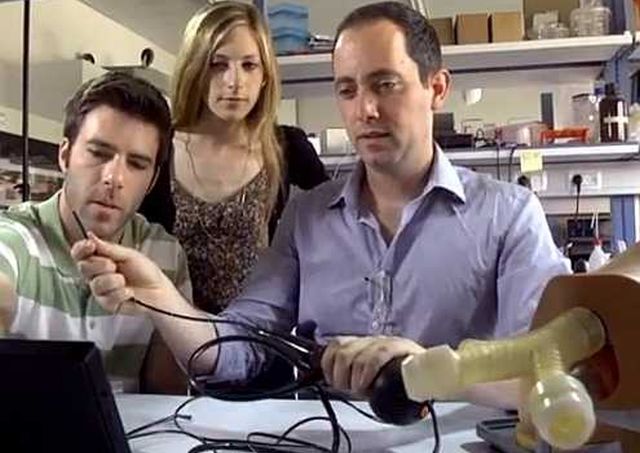–
Hebrew University Biodesign students invent Robotic Intubation Prototype Crawls to the Lungs in Difficult Situations.
–
Will you offer us a hand? Every gift, regardless of size, fuels our future.
Your critical contribution enables us to maintain our independence from shareholders or wealthy owners, allowing us to keep up reporting without bias. It means we can continue to make Jewish Business News available to everyone.
You can support us for as little as $1 via PayPal at office@jewishbusinessnews.com.
Thank you.
The future of intubation
–
Intubation is the placement of a plastic tube into the lungs that allows anesthetized or critically ill patients to breathe. The current procedure requires the physician to see the trachea and choose between two very similar holes, one leading to the lungs, the other to the stomach. Failure to identify the correct hole can lead to patient death. Worse, intubation sometimes has to be carried out in the field, during military operations, or on patients that have blood or liquids obstructing the way.
This month, graduates of the Hebrew University of Jerusalem’s Biodesign program revealed a prototype called GuideIN Tube. GuideIN Tube is a robotic intubation device that automatically identifies the lungs using an infrared source and navigates toward it. The device was successfully tested on cadavers at the Hadassah Medical Center, and clinical trials will begin as soon as next year.
–
–
“I strongly believe that GuideIn Tube represents the future of intubation, ” said Dr. Elchanan Fried, director of the general intensive care unit in Hadassah Medical Center, and the group’s clinical expert. The device targets a $3 billion market, which is expected to increase by 5% annually. “We really thought about the paramedic in the field”, said Itai Hayut, the leading engineering student on the project. “We wanted something simple and compact that they could trust without fail. I think we hit it on all marks.”
Other students in the group include Tommy Weiss-Sadan, a biology graduate student, as well as Sarah Horwitz and Ariel Shrem who are completing their MBA degrees.
Biodesign is a multi-disciplinary, team-based approach to medical innovation, created by the Hebrew University of Jerusalem and Hadassah Medical Center in partnership with Stanford University.
The program takes outstanding medical fellows, bioengineering and business graduate students, and tutors them in the science and practice of bringing a medical innovation to the market. The program is directed by Dr. Yaakov Nahmias and Prof. Chaim Lotan.





